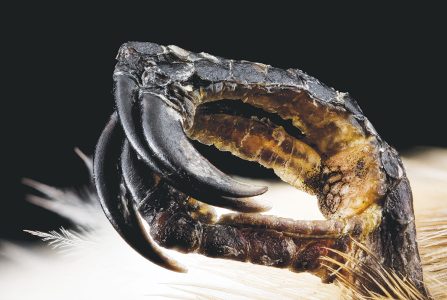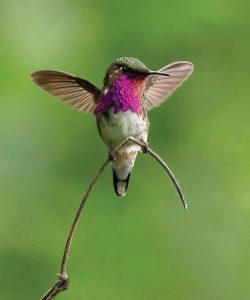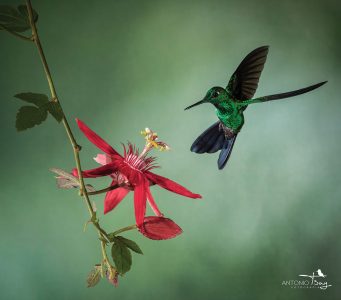Hummingbirds
Hummingbird photos: Toni Tsay, instagram: @tonitsay
 Most hummingbirds beat their wings 60 to 80 times per second. The name hummingbird comes from the humming sound their wings make as they fly. These birds’ flexible shoulder joints allow their wings to rotate 180 degrees, which enables backward flight and stationary hovering.
Most hummingbirds beat their wings 60 to 80 times per second. The name hummingbird comes from the humming sound their wings make as they fly. These birds’ flexible shoulder joints allow their wings to rotate 180 degrees, which enables backward flight and stationary hovering.
Hummingbirds have compact bodies with relatively long, blade like wings having anatomical structure enabling helicopter-like flight in any direction, including the ability to hover. Particularly while hovering, the wing beats produce the humming sounds, which function to alert other birds. In some species, the tail feathers produce sounds used by males during courtship flying.
 Hummingbird legs are short with no knees, and have feet with three toes pointing forward and one backward.
Hummingbird legs are short with no knees, and have feet with three toes pointing forward and one backward.
The sexes differ in feather coloration, with males having distinct brilliance and ornamentation of head, neck, wing, and breast feathers. The most typical feather ornament in males is the gorget – a bib-like iridescent neck-feather patch that changes brilliance with the viewing angle to attract females and warn male competitors away from territory.
 Hummingbird females build a nest resembling a small cup about 1.5 inches (3.8 cm) in diameter, commonly attached to a tree branch using spider webs, lichens, moss, and loose strings of plant fibers.Typically, two pea-shaped white eggs – the smallest of any bird – are incubated over 2–3 weeks in breeding season.
Hummingbird females build a nest resembling a small cup about 1.5 inches (3.8 cm) in diameter, commonly attached to a tree branch using spider webs, lichens, moss, and loose strings of plant fibers.Typically, two pea-shaped white eggs – the smallest of any bird – are incubated over 2–3 weeks in breeding season.
Hummingbirds have unusually long lifespans for organisms with such rapid metabolisms. Though many die during their first year of life, especially in the vulnerable period between hatching and fledging, those that survive may occasionally live a decade or more.
In the realms of symbolism and folklore, the hummingbird has charmed its way into various cultures, often seen as a messenger of love, joy, and good fortune, they are believed to carry the wishes of the people to the spirit world, a testament to their profound connection to the divine.


